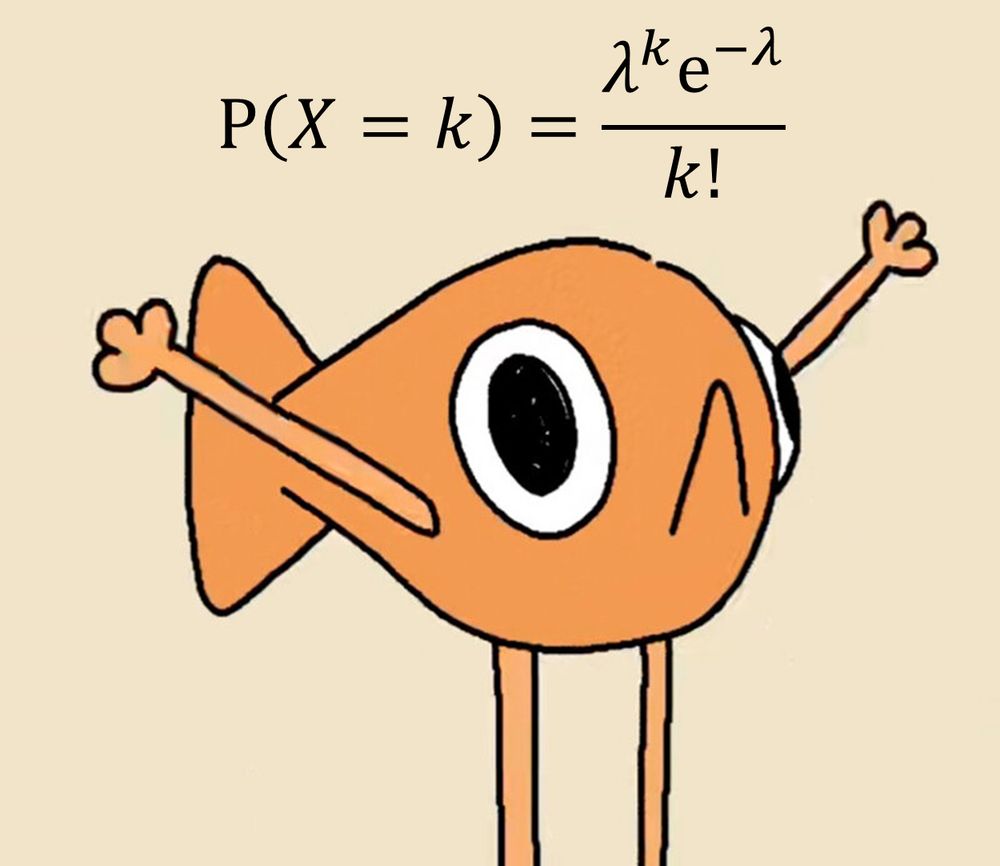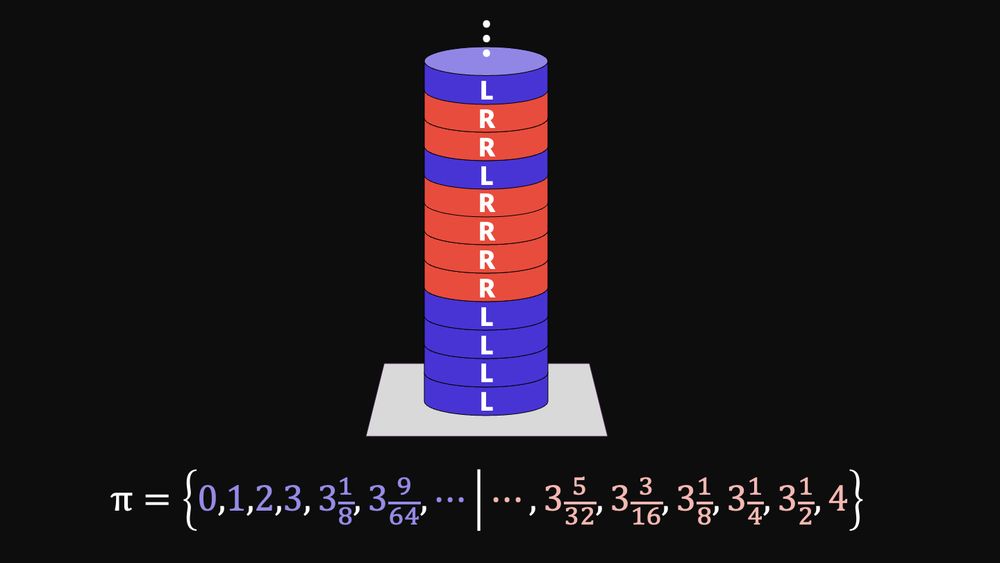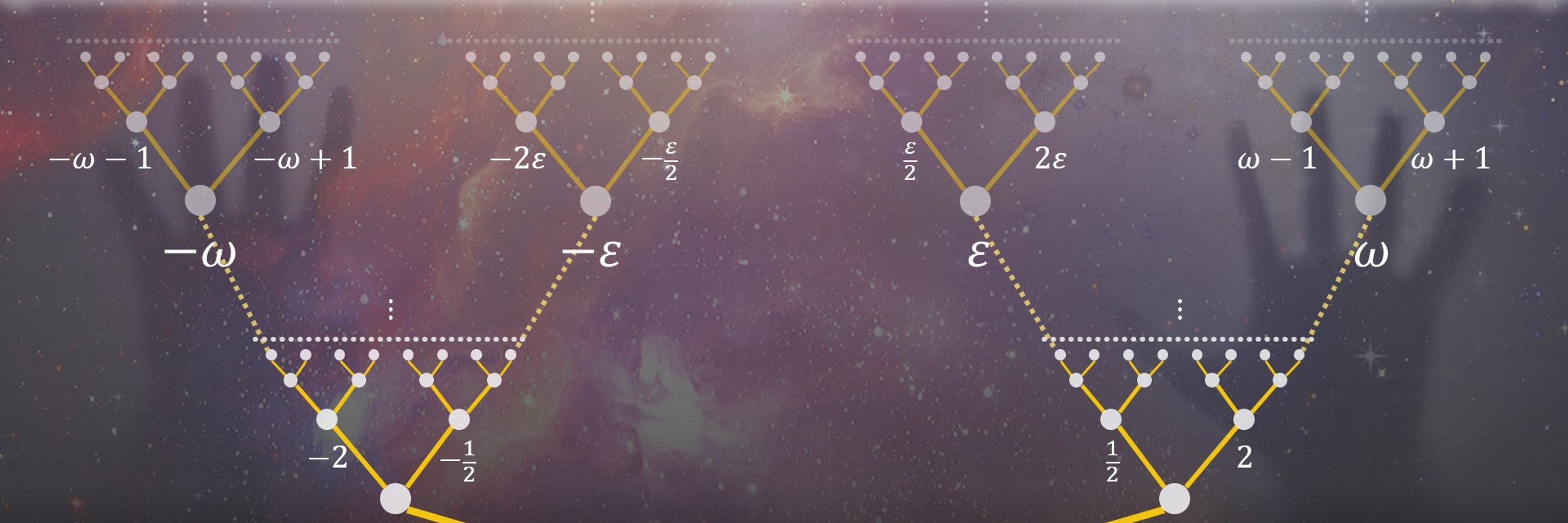
He/him. Pronounced SHILL-lit-toe.
Websites: https://www.solidangl.es, https://1dividedby0.com


One of these days I'll manage to post something completely right the first time. 😅

One of these days I'll manage to post something completely right the first time. 😅
Squaring makes all the deviations positive, and square rooting at the end gets us back to our original units.
(BTW, here's a video on why squaring really is the best choice:
www.youtube.com/watch?v=q7se...)
[15]

Squaring makes all the deviations positive, and square rooting at the end gets us back to our original units.
(BTW, here's a video on why squaring really is the best choice:
www.youtube.com/watch?v=q7se...)
[15]
In statistics, we often want to describe not just the center but the spread of a data set.
The first thing most people try is averaging the deviations — but the overs will always cancel out the unders and give zero. So what can we do?
[14]

In statistics, we often want to describe not just the center but the spread of a data set.
The first thing most people try is averaging the deviations — but the overs will always cancel out the unders and give zero. So what can we do?
[14]
1. Apply some function f to your data.
2. Find the arithmetic mean.
3. Undo f with the inverse function f⁻¹.
The geometric mean uses f(x) = log x, and the harmonic mean uses f(x) = 1/x.
[13]

1. Apply some function f to your data.
2. Find the arithmetic mean.
3. Undo f with the inverse function f⁻¹.
The geometric mean uses f(x) = log x, and the harmonic mean uses f(x) = 1/x.
[13]
Well, in physics, you learn that frequency and wavelength are inversely proportional. So can we do as follows:
1. Take the reciprocals of the data.
2. Find the arithmetic mean.
3. Undo the reciprocal with another reciprocal.
That's the harmonic mean.
[10]

Well, in physics, you learn that frequency and wavelength are inversely proportional. So can we do as follows:
1. Take the reciprocals of the data.
2. Find the arithmetic mean.
3. Undo the reciprocal with another reciprocal.
That's the harmonic mean.
[10]
So I have to place my finger to make the vibrating string 2/3 as long.
(BTW, if you lightly touch here, you get what's called a "string harmonic!")
[9]

So I have to place my finger to make the vibrating string 2/3 as long.
(BTW, if you lightly touch here, you get what's called a "string harmonic!")
[9]
Where should I put my finger to play that E?
It's NOT halfway to the octave mark!
[8, lol]

Where should I put my finger to play that E?
It's NOT halfway to the octave mark!
[8, lol]
We do a three-step procedure:
1. Take logarithms of the value.
2. Find the arithmetic mean.
3. Undo the logarithm with an exponential function.
What we get is the geometric mean.
(Fun exercise: check this algebraically!)
[5]

We do a three-step procedure:
1. Take logarithms of the value.
2. Find the arithmetic mean.
3. Undo the logarithm with an exponential function.
What we get is the geometric mean.
(Fun exercise: check this algebraically!)
[5]
This gives a much better estimate — as you can check on Wikipedia.
But why did this work? How would anyone think to try this?
[3]

This gives a much better estimate — as you can check on Wikipedia.
But why did this work? How would anyone think to try this?
[3]
What it does is find the number that's in the "center" of a given data set by "redistributing" the sum evenly across all the values.
But as anyone who's studied triangles knows, there may be multiple kinds of "center!"
[1]

What it does is find the number that's in the "center" of a given data set by "redistributing" the sum evenly across all the values.
But as anyone who's studied triangles knows, there may be multiple kinds of "center!"
[1]
Probably some combination of (1) teaching our data analysis unit in our STEM 101 course at Oglethorpe and (2) all of @howiehua.bsky.social's great posts surrounding Mean Girls Day.
I'd like to show how some of these various means are related.
🧵 [0]

Probably some combination of (1) teaching our data analysis unit in our STEM 101 course at Oglethorpe and (2) all of @howiehua.bsky.social's great posts surrounding Mean Girls Day.
I'd like to show how some of these various means are related.
🧵 [0]
The extra thousand becomes "-ardo" (borrowed from French) at the end of the word but it still is easy enough to understand.
And the term "milione" makes sense: the "-one" suffix makes it "big thousand".
Magnifico!
(5/5)

The extra thousand becomes "-ardo" (borrowed from French) at the end of the word but it still is easy enough to understand.
And the term "milione" makes sense: the "-one" suffix makes it "big thousand".
Magnifico!
(5/5)
If we use the "long scale" in British English, we get base million, with a sub-base of a thousand, with a sub-sub-base of ten! And everything makes sense!
...or at least that used to be what British English uses. Now they just use the short scale like Americans.
Bummer.
(4/5)

If we use the "long scale" in British English, we get base million, with a sub-base of a thousand, with a sub-sub-base of ten! And everything makes sense!
...or at least that used to be what British English uses. Now they just use the short scale like Americans.
Bummer.
(4/5)
But isn't it weird how the prefixes don't seem to match up with the powers? It's off by one.
It would be nice if "trillion" were 1000³, but nope, it's actually 1000⁴. Confusing isn't it?
(3/5)

But isn't it weird how the prefixes don't seem to match up with the powers? It's off by one.
It would be nice if "trillion" were 1000³, but nope, it's actually 1000⁴. Confusing isn't it?
(3/5)
I remember how difficult it was to learn that "million" is "hyaku-man" (百万), which translates to "one hundred myriad".
I had to completely reframe how I group numbers.
(2/5)

I remember how difficult it was to learn that "million" is "hyaku-man" (百万), which translates to "one hundred myriad".
I had to completely reframe how I group numbers.
(2/5)
The English language is not base ten.
It's base thousand.
Sure, we write numbers using the Hindu-Arabic digits 0 through 9, but the way our language is structured groups numbers in powers of a thousand.
If anything, we're sub-base ten.
(1/5)

The English language is not base ten.
It's base thousand.
Sure, we write numbers using the Hindu-Arabic digits 0 through 9, but the way our language is structured groups numbers in powers of a thousand.
If anything, we're sub-base ten.
(1/5)
Students learned how to count in Iñupiaq and write numbers using the Kaktovik numerals (as well as convert between base ten and base twenty). 🧮
Lots of discussion about how the way we're used to thinking isn't the only way to do things! 🙂


Students learned how to count in Iñupiaq and write numbers using the Kaktovik numerals (as well as convert between base ten and base twenty). 🧮
Lots of discussion about how the way we're used to thinking isn't the only way to do things! 🙂

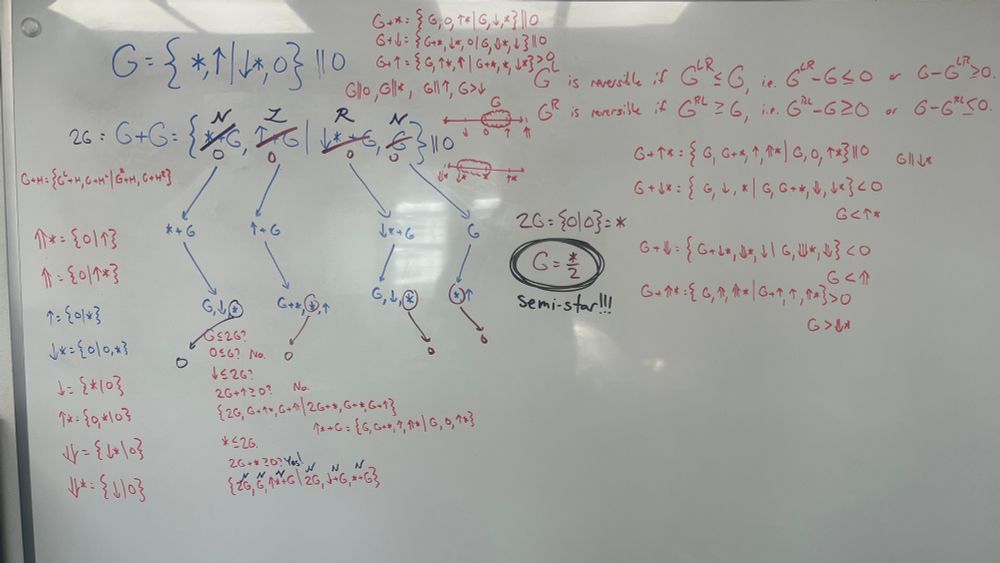
Left: Garlic deviled eggs (using toum!)
Right: Ramen deviled eggs (made like onsen eggs but hard boiled)
![Left: Garlic deviled eggs (toum [Lebanese garlic sauce], mayo, dijon, green onion, topped with chives and cayenne)
Right: Ramen deviled eggs (miso, mayo, honey, topped with furikake, and the whites have been marinated like onsen eggs)](https://cdn.bsky.app/img/feed_thumbnail/plain/did:plc:zwo5rlq5oepoq2yx4crus3ma/bafkreicbdukyllgbgpajefngcp4nohgkfovk3oyag5ssdul54qust3rvu4@jpeg)
Left: Garlic deviled eggs (using toum!)
Right: Ramen deviled eggs (made like onsen eggs but hard boiled)
If this goes well it will be the *last* final I ever have to take.
LET’S GO! 😎
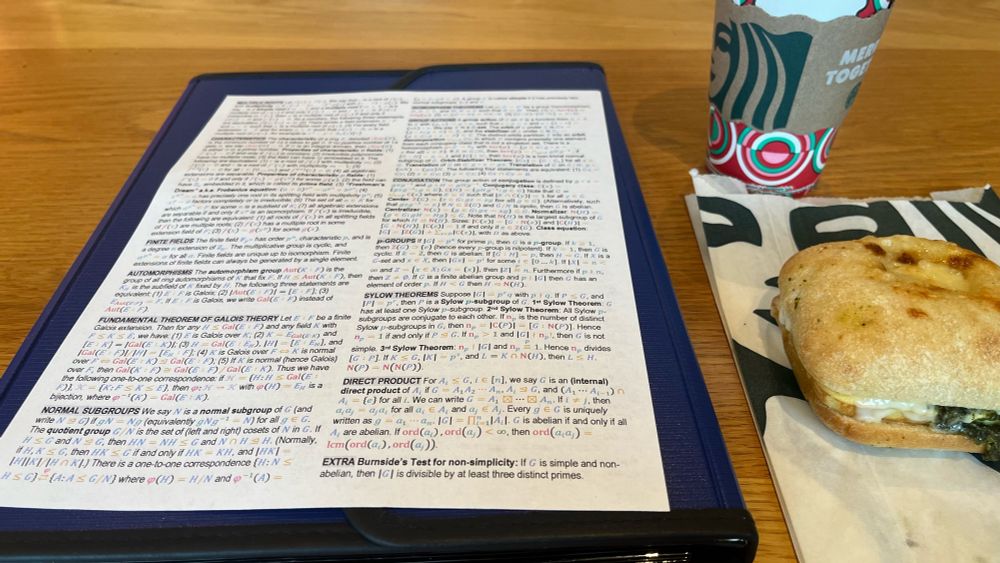
If this goes well it will be the *last* final I ever have to take.
LET’S GO! 😎


